Film is such a diverse medium that it is possible to call yourself a fan without ever venturing out of your favourite genre. Hell, it is perfectly acceptable nowadays to add ‘films’ to your list of hobbies by watching nothing more than the output of the MCU. Getting some people to venture into the wonderful world of foreign cinema can admittedly be a tall order. We’ve all met one, right? The ‘I go to the cinema to watch, not to read!’ crowd. That’s fine. There is nothing wrong with having your entertainment packaged as you like it.
Across the 15 years I’ve been seriously studying film though, the attitude towards subtitles has shifted a fair bit. Once Brave New Worlders had done a bit of toe dabbling into foreign waters and discovered the ultra-violence of the Asian action scene, the cute/complex world of Anime or the sophisticated sparkle of the French rom-com, for example, word started to spread that you could, indeed, ‘read’ a movie and still get absorbed.
This, coupled with the gentle, seamless integration of subtitles into mainstream Hollywood blockbusters, meaning that some people didn’t even realise that their favourite new film had a raft of sections presented in ‘read-along’, has opened the floodgates and we’re now at the slightly ridiculous point in time where two of the best ever Taiwanese action movies have been directed by a Welshman and a half-subtitled oddity about not eating giant pigs has been commissioned and financed by a mega-popular online streaming service.
Everyone loves a bit of subtitling now; even Statham has been known to indulge!
But not really with Bollywood. Despite the films now playing regularly in many an everyday picture house, there is something about Bollywood that keeps the average Joe away. It seems you are either a fan of it or not which seems odd to me as it is, in many ways, the biggest movie industry in the world.
Like India itself, it can feel like a daunting head-trip to an outsider where rules don’t apply; one of swirling colour, exhausting length, multiple flavour notes and, of course, random song-and-dance numbers. All of this, coupled with the fact that their turn out is so numerous, means it can be very difficult to know where to start. I’m one of those irritating people who thinks of himself as a film academic, so naturally I delved into the classics, three to four hour thunderous melodramas that make Gone With The Wind look like just wind, but no-one wants to go for a quick paddle into Mother India (1957). Those films take a good deal of investment.
But what if you do fancy a dip? What if your go-to is watching spiders become men or apes become…war, or Mila Kunis falling over, or Octavia Spencer giving you ‘the feels’, yet it is Friday night and you think you’d quite fancy a Bollywood movie?
Well, fear not friends, as over the years I have seen a few weird and wonderful Bollywood films that I think can give you that multiplex hit you desire. I’m no expert. I’m not even a hardcore fan. My recommendations here are certainly not the best of Bollywood, they are more the… easiest of Bollywood – accessible works that don’t quite fit into the daunting mould but have enough essence to give you a taster.
Fancy a paddle?
If you liked The Fast And The Furious try…the Dhoom trilogy (2004-2013)
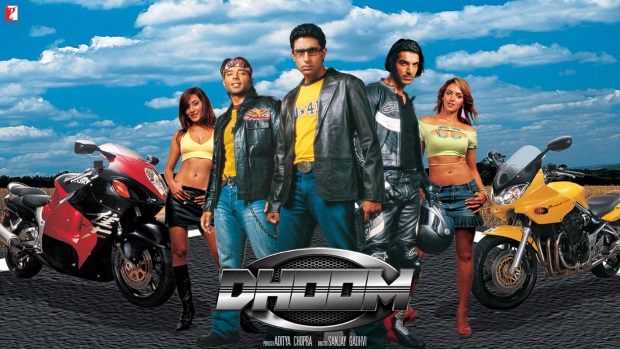
This is the obvious place to start for me. The Dhoom trilogy is already sort-of well known outside of the usual Bollywood audiences, and it’s a great starter example of their take on the action movie. OK, they can’t match Vin Diesel and co. for budget so the special effects are sometimes a bit ropey, but they go about their blustery business with a tongue-in-cheek ridiculousness that proves rather infectious, part mocking and part in love with their American counterparts. Motorbikes are chased, trains are robbed and girls are pursued, whilst an arrogant but likeable rogue played with Cruise-like charisma by Abhishek Bachchan is our guide.
There is something easy-going about them: action films built around 90s style camaraderie and quipping rather than the end-of-the-world dread and heft of the modern blockbuster. They are as ridiculous (and often as naff as) the Fast And Furious crew and the first one clocks in at a wisp over two hours which makes it the perfect introduction.
Oh, and the songs? C’mon. Are you telling me that you wouldn’t love it if The Rock and Vin Diesel stopped for a musical interlude in the next instalment of their franchise…?
If you liked Eat Pray Love try… Queen (2013)
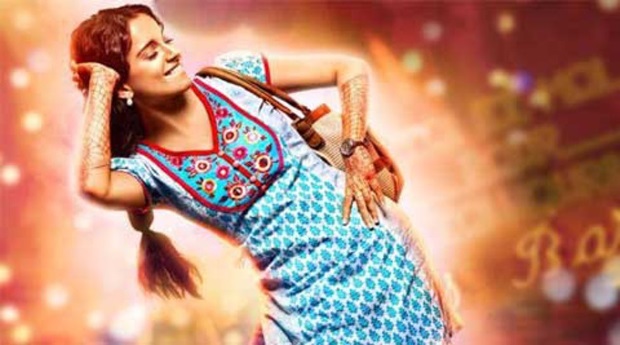
I’m afraid I’m not a fan of the film adaptation of Eat Pray Love, but the comparisons we can make with Queen are ripe and, if you did enjoy that movie, you should certainly check out this much better equivalent. After falling out with her husband just before their wedding, our heroine Rani (a wonderful Kangana Ranaut) sets off on her honeymoon in Europe without him. Here she discovers more about herself than she ever did with her traditional family back home.
I know, so far so clichéd right? But there is something deeply satisfying about Queen that sets it well above the average Hollywood ‘find yourself’ flick. It may be something to do with the journey taken, from India, a culture we are perhaps less familiar with, into Europe, where we feel more at home.
Rani blossoms in our direction as it were, and her insights give us a fresh perspective on our own lives. Queen feels cool and modern too, foregoing song and dance numbers for clever soundtrack mixing and montage, and it’s two and a half hour run time doesn’t feel like a chore. Plus a good chunk of it is in English, as well as Hindi, French, Dutch and Japanese. A moving treat that knocks Hollywood, sincerely, into a hat.
If you liked The Woman In Black try… 1920 (2008)
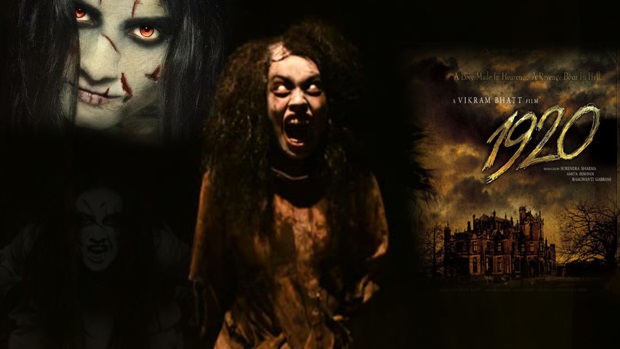
Bollywood horror is a strange thing. Seeming rather tame next to the blood-and-guts disgustathons of our multiplexes, they often rely on dread and atmosphere and, being honest, often fail. This period tale of demonic possession is often compared rather unfavourably to The Exorcist but I feel The Woman In Black is a much better stablemate for it. It takes its time to develop and the scares are systematic, but there is thought in the filmmaking and a knowledge of the genre put to respectful use. It harks back to the days when horror could be for everyone rather than just adults and that feels rather charming.
If you fancy something a bit more frightfully fun you could do worse than portmanteau pic Darna Mana Hai (2003) which has more in common with a marathon of some of the sillier Twilight Zone episodes, including a segment where occupants of a village turn into apples (tell me sincerely you don’t want to see that!).
Or there’s the really rather good Raaz (2002) which plays out like What Lies Beneath, and followed true Hollywood horror tradition when it gained a reboot in 2016. It is true to say that the songs do not really work here. They often diffuse tension and come across like a daft Halloween disco. But if you can put up with that there is joy to be had from seeing familiar spooky situations given an Indian twist. Genre connoisseurs should get stuck in.
If you liked Reservoir Dogs and The Usual Suspects try… Kaante (2002)
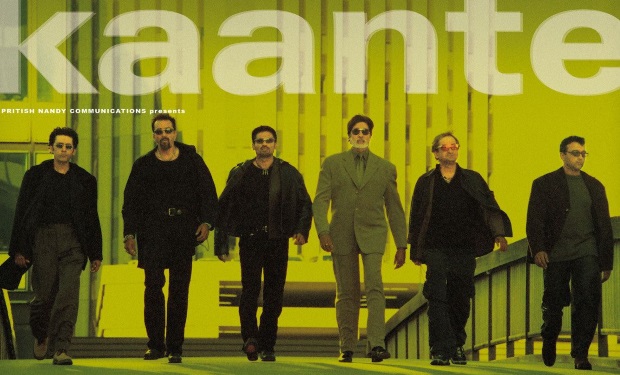
Kaante is my go-to film for trying to convince people that they should have a go at Bollywood. In what is a… er… faithful tribute to the two masterpieces mentioned, it literally takes the first half of the story of The Usual Suspects and welds Reservoir Dogs onto the back end, and it does so without even a hint of trying to hide it.
If you can cope with the sheer audacity of that cut-and-shut crime though, Kaante is an absolute hoot. The musical numbers add to the fun too; hardened criminals sitting around smouldering in a warehouse singing intensely about how one of them might be a cop…I’m not even sure Tarantino could pull that off.
The genius of it is that it is stealing from two directors who are well known themselves for partaking in a ‘creative borrowing’ process, and I think misters Singer and Tarantino would enjoy the irony. It’s like a modern day version of the A Fistful Of Dollars inspiring Seven Samurai inspiring The Magnificent Seven story. But mostly, if you are familiar with the two source films, it is just a ruddy good hoot. Honestly, get a few friends round, have a few beers and play spot the difference. Wonderful stuff.
If you liked Room try… Black (2005)
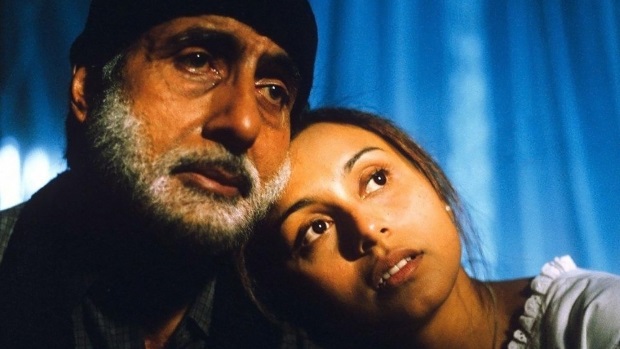
Here we are straying into the realms where Bollywood starts to more closely resemble its world cinema cousins than anything in its own repertoire. Black is a superb piece of drama and a showcase for the supreme talents of acting superstar Amitabh Bachchan. Like Room, it takes a story that could have been mined for sentiment and treats it rough, extracting genuine, earned emotion from its audience along the way. The often harrowing story of a relationship between a blind woman and her headstrong teacher, it is such a satisfying, complex film that I’m surprised it hasn’t been snapped up for remake by Hollywood yet.
If you like to get your teeth stuck into drama then may I also take this opportunity to recommend Fire (1996) which pushed relationship boundaries so far that it was banned in India, and Guru (2007) where our old friend Abhishek Bachchan from Dhoom gives a superb performance as Indian business tycoon Gurukant Desai. That film unfolds like a Scorsese biopic, and all three films are worth shouting about.
If you liked E.T. The Extra-Terrestrial try… Koi…Mil Gaya (2003)
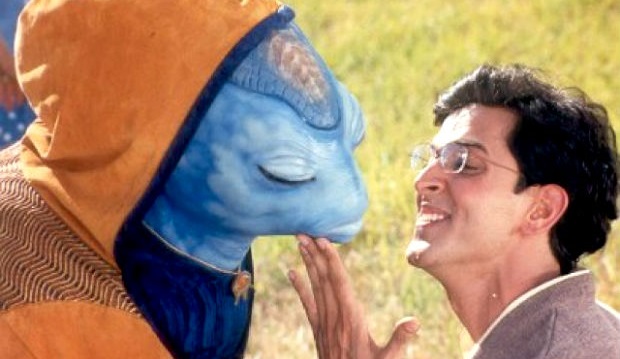
Modern sci-fi can be really hard to pull off impressively when you are separated from the big budget world of special effects. Everything has to be busier and better than films we saw but a few moments ago and even the quieter, more cerebral films like Arrival need to turn the unthinkable into the convincing. When trying to imitate this on a lower budget, Bollywood sci-fi can be unintentionally hilarious. But anyone who longs for the more pioneering days of practical effects and gentle messages about our place in the Universe could do worse than to give Kol…Mil Gaya a go.
Rated 12A over here, it has enough grit to engage a curious teenager who is open to a new cultural experience too, and special effects artist James Colmer, who had worked on the likes of Independence Day, gives the whole thing a polished, slick enough look for the effects to not distract from the story. It is slapstick, knockabout fun with a serious message and a good does of sentiment, which should definitely appeal to the wide-eyed Spielberg kid I believe resides in all of us.
If you liked Superman try… Supermen Of Malegaon (2008)
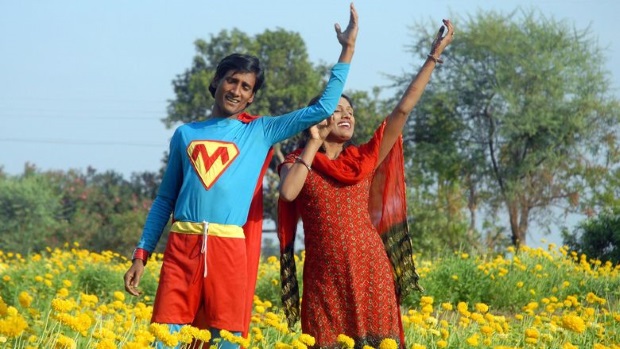
My last recommendation is a bit of a cheat but it could be the best way to highlight the endearing, pioneering spirit at the heart of the Indian film industry.
Supermen Of Malegaon is a relatively short documentary about a group of men who dream of making an Indian Superman film, and their attempts to try and match Hollywood without any hint of a budget. Yes, the attempts at emulating superhero special effects are delightfully hilarious but they are also great, like a Bollywood attempt at a Be Kind Rewind segment, and the spirit of the cast and crew is so infectious you’ll feel inspired.
As a metaphor, the documentary sums up exactly what I’ve been trying to put across with this article: that these films should be praised for getting a lot done in a chaotic way. They may imitate Hollywood but it never feels like a cheap, lazy knock-off. The fact that Bollywood produces so many films in a year is, in itself, not as impressive as just how many of them are actually pretty watchable. They may often be to formula, steal bits from the West, feel overlong, sentimental and melodramatic, but they are all these things with a spirit and pride that our mainstream fare is often lacking.
Like a beaten-up jalopy on its last legs being kept alive by bare nuts, bolts and a good deal of self-belief, they get you to your desired destination even if the ride was a little less comfortable than you are used to. The Indian film industry cannot and should not be marginalised, and I hope I have inspired you enough to give at least one of their products a go. Have fun!

